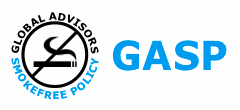NYU Researchers show danger to hookah lounge workers from secondhand smoke exposure (NYU press release)
Posted on
The Department of Environmental Medicine at New York University’s College of Global Public Health released a study today that is published online in the journal Tobacco Control entitled, “Secondhand hookah smoke: an occupational hazard for hookah bar employees,” funded by grants from National Cancer Institute of Environmental Health Sciences, according to the NYU press release.
Toxicologist and senior study author Professor Terry Gordon, PhD, and researchers studied the air quality in 4 NYC hookah bars, and conducted biomarker testing of the employees after their workshift to determine levels of nicotine in their bodies, heart rate, etc. Tested as they left their shifts, 10 hookah bar employees were found to have elevated levels of toxins and identifiable markers of inflammation that are linked to airway and heart diseases. The average level of exhaled carbon monoxide rose markedly after the workers’ shifts, with readings from two of the 10 workers greater than 90 parts per million, which is similar to those seen in heavy tobacco smokers
Indoor air pollutant concentrations varied, but were directly proportional to the number of people smoking and water pipes used. Many of the hookah lounges had no open windows or doors to ventilate the smoke. The new study also identified airborne nicotine in the four hookah bars surveyed even though tobacco-based shisha is banned in these venues in New York City.
Inhaling hazardous levels of carbon monoxide and nicotine while at work that appear to cause adverse health effects on employees. “Our findings challenge the belief that secondhand exposure to hookah smoke is safe,” Gordon says. According to the study authors, New York City has approximately 140 hookah bars and lounges.
Study abstract in Tobacco Control journal at http://tobaccocontrol.bmj.com/content/early/2016/01/11/tobaccocontrol-2015-052505.short?g=w_tobaccocontrol_ahead_tab.
